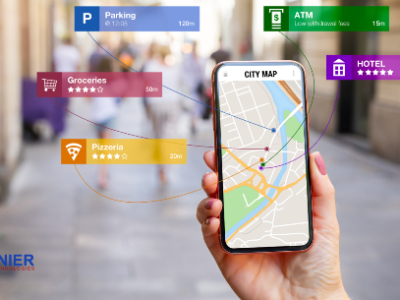Samar Mittal, VP, Cloud and Network Services (CNS), Global Business Center (GBC) at Nokia MEA talks the importance of energy efficiency in the development and management of telecommunication networks
Energy costs comprise between 20-40% of a telecom company’s OPEX, particularly in regions that rely heavily on diesel such as Africa and Southeast Asia, says research from the GSMA. With many countries in Africa looking to adopt and expand their footprint in newer 5G technologies, would this mean higher energy costs? It is the telecom conundrum – how can companies create these networks that have can deliver higher bandwidth, faster speeds and greater reliability, all while efficiently managing their operating costs, particularly their energy?
RELATED: Nokia research reveals 5G subscriptions in MEA to exceed 250 million by 2026
This is further complicated by the fact that, as another GSMA report ‘Mission Sustainable: 5G efficiencies and the green network’ underscored, sustainability is now ‘fundamental in how operators design and implement networks’ with 85% of operator network buyers citing energy efficiency as an extremely or very important purchasing priority. Companies need to reduce the energy cost burden while meeting the growing demand from customers and regulators to create green networks that play a fundamental role in sustainability and achieving net zero targets.
The GSMA report highlighted three core technologies that could play a pivotal role in helping companies within the telecoms sector refine their energy usage and improve their sustainability rankings. Artificial intelligence (AI), of course, is on the list as it offers companies data, insights, and visibility; software and network visualisation also provide companies with improved control and centralised network intelligence; and site simplification would help streamline power demands and supply.
Whether delving into AI or machine learning, companies must find smart ways of driving sustainability momentum and balancing the demand for 5G infrastructure and improved connectivity and bandwidth with energy-efficient solutions. The mandates of international sustainability benchmarks, regulatory requirements and, of course, their own net zero targets are critical – fortunately, most companies are paying attention.
In Kenya, Safaricom was facing this challenge – the company was experiencing high energy consumption alongside an escalating electricity tariff and carbon emission expectations. Their 4G and 5G base stations were accounting for 50% of annual expenditure – a cost that was on an upward trajectory. With the rising cost of power, the bills were becoming increasingly unaffordable and the problem was compounded by the company’s commitment to reducing its carbon footprint. The sector has been found to be a major contributor to carbon emissions at 2.5% of the total and Safaricom wanted to play its part in bringing down its share of this total.
To resolve the challenge, the company turned to a Nokia solution that leverages artificial intelligence (AI) along with machine learning (ML) to optimise power consumption by dynamically adjusting network configurations. Using AI models and ML, the system can predict network traffic and adjust shutdown times dynamically to extend savings windows compared to static schedules. It saves on usage without compromising on performance and innovatively uses the combination of supervised and unsupervised learning to adjust predictions based on the latest load and network performance feedback. The solution provides the company with coherent energy control that dynamically adapts energy consumption to traffic levels while still delivering a premium experience to customers.
Safaricom did a proof of concept of the solution across 36 sites in Kisumu and the result was a 20% reduction in power consumption with energy and power savings falling within the range of 4-5%. Taking the data from across all sites, it is predicted that the energy efficiency benefits of this technology could potentially deliver savings of around 170 million KES and would be the equivalent of planting 250,000 trees.
Nokia AVA for Energy uses AI and ML algorithms to shut down idle and unused equipment automatically during low usage periods in conjunction with Nokia Radio Energy Efficiency features. The company has developed more than 50 completed or active energy saving projects with companies around the world, with the goal of reducing energy consumption and costs and bringing these organisations into a place where they can actively control their sustainability agendas.
Looking ahead, it is solutions like these that are set to shift the energy dynamic for the telecoms sector, ensuring reliability and quality while equally giving them the space for innovation, growth, and the evolution of 5G.






























